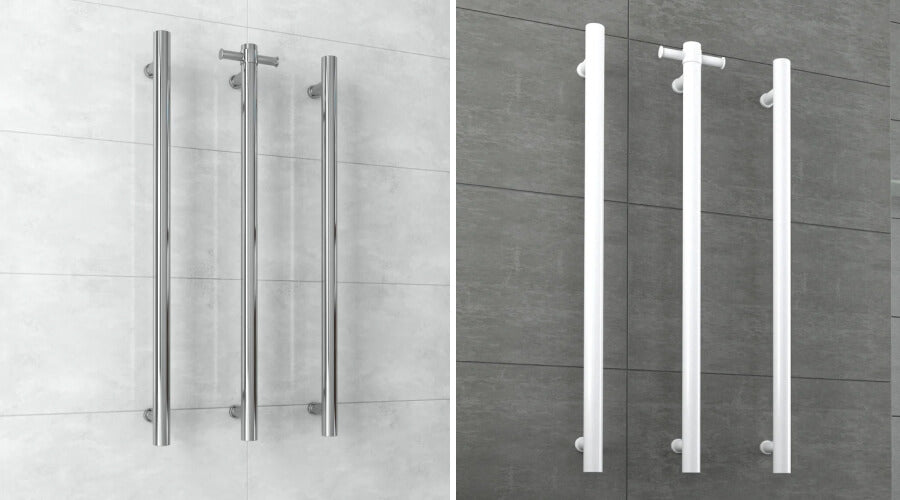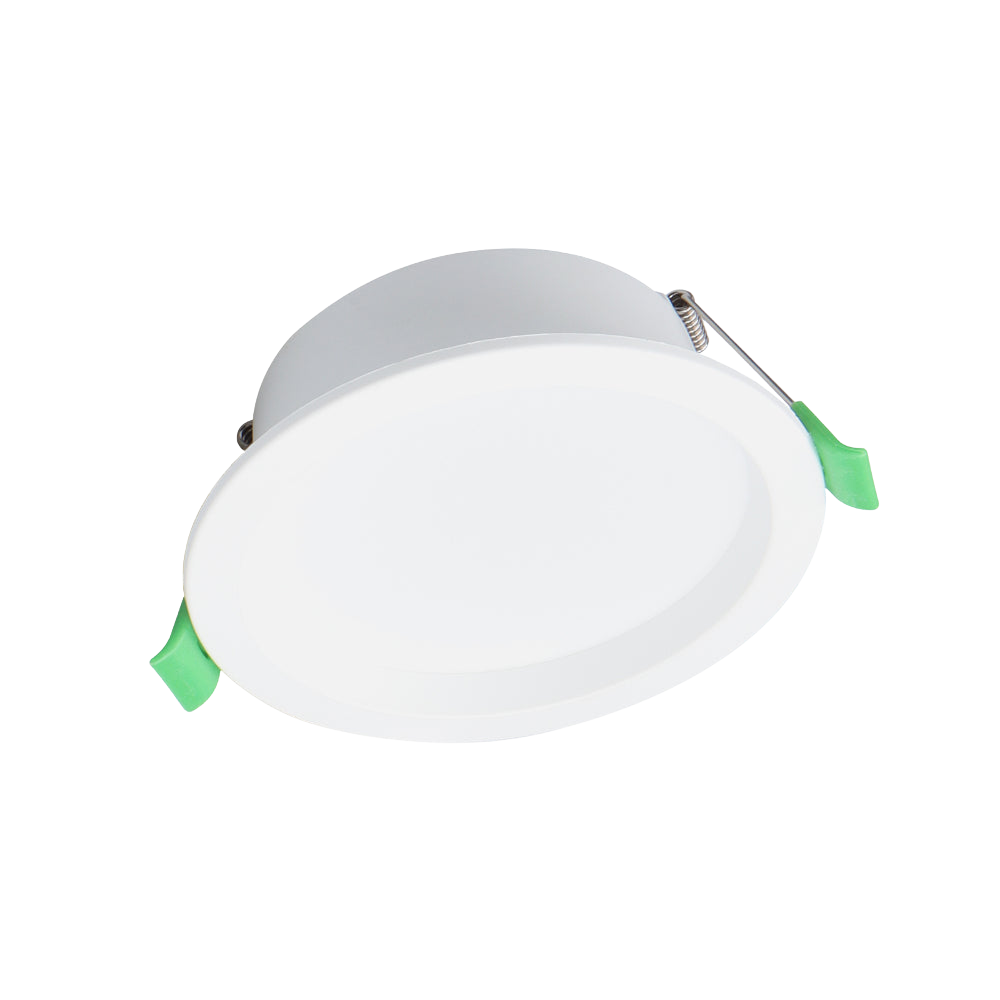Unpacking How Much Electricity a Heated Towel Rail Uses Per Quarter

Wondering how much electricity a heated towel rail uses? Most dry heated towel rails consume anywhere between 20 to 250 watts per hour. Some use more, and some use less. It depends on the brand, style, and size.
In this blog, we’ll break down the factors that affect electricity usage and compare Buildmat’s range of heated towel rails from leading brands like Nero, Phoenix, and Thermogroup. By the end, you’ll have a clear idea of how much you’ll be paying per quarter and some handy tips to keep those costs down.
How Much Electricity Does a Towel Rail Use?
On the back of your heated towel rail, there will be a sticker with the model and the wattage that the rail uses. This will likely be anywhere from 20 to 250 watts. Let’s break down the cost based on typical Australian electricity rates and usage patterns.
Let’s use a 600x800mm rail that draws 90 watts as an example (and that’s on the higher end of the scale!) Suppose you run it for 6 hours a day – 3 hours in the morning and 3 hours in the evening.
First, convert the wattage (90 watts) into kilowatts. To do this, divide by 1000:
90 watts ÷ 1000 = 0.09 kilowatts per hour (kWh)
Next, calculate the daily usage:
0.09 kWh x 6 hours = 0.54 kWh per day
Then, calculate the monthly usage:
0.54 kWh/day x 30 days = 16.2 kWh per month
Now, using the average Australian electricity rate of $0.25 per kWh, calculate the monthly cost:
16.2 kWh x $0.25 = $4.05 per month
So, running this heated towel rail for 6 hours a day will cost you about $16.20 per quarter, which is very reasonable for having a dry, warm towel every time you shower.
Compare this to using a tumble dryer, which typically draws about 3.3 kW per hour. The heated towel rail is a much more affordable option for keeping your towels dry and warm.
What Affects Your Towel Rail’s Energy Use?

Type of Heated Towel Rail
There are three main types of heated towel rails: electric, hardwired, and hydronic.
Electric Heated Towel Rails: These are the easiest to install. You simply plug them into an outlet, and they start working. They directly consume electricity to generate heat and are perfect for those who want a quick and simple solution. They can be more convenient but might be slightly more expensive to run, depending on your usage.
Hardwired Heated Towel Rails: These are similar to electric models but are wired directly into your home’s electrical system. This means they don’t require a visible plug, offering a cleaner look. Installation is more complex and typically requires a professional electrician. They are great if you want a seamless, integrated appearance in your bathroom.
Hydronic Heated Towel Rails: These connect to your home’s central heating system and use hot water to heat the rail. They can be more energy-efficient if you already use your central heating regularly. However, they might not be the best choice if your central heating isn’t on for much of the year.
Size and Power
Next up is the size and power of your towel rail. The size of the towel rail you choose will significantly impact its energy consumption. Larger towel rails with more bars can hold more towels but will use more power. Most towel rails consume between 100 to 200 watts per hour, but high-powered models can use even more.
How Often You Use It
Finally, how you use your towel rail plays a crucial role in its overall energy consumption. Running your towel rail for just one hour a day is a great way to enjoy warm, dry towels without using too much electricity. However, if you leave it on all day, every day, you’ll see a noticeable increase in your energy bill. Using a timer or thermostat can help manage this by ensuring your towel rail only runs when needed, such as in the morning or evening.
Comparing Energy Cost of 4 Different Heated Towel Rails
|
Model |
Wattage |
Daily Energy Consumption (kWh) |
Estimated Quarterly Running Cost |
|
35W |
0.21 kWh/day |
$4.73 |
|
|
Straight Round Vertical Single Heated Towel Rail Brushed Nickel |
30W |
0.18 kWh/day |
$4.05 |
|
23W |
0.138 kWh/day |
$3.11 |
|
|
Flat Pill 12V Vertical Single Heated Towel Rail Polished Stainless Steel |
20W |
0.12 kWh/day |
$2.70 |
Tips to Save on Heated Towel Rail Energy Costs
Timers and Thermostats
Using timers and thermostats is a great way to manage the energy consumption of your heated towel rail. Timers allow you to set specific operating hours, so the towel rail only runs when you need it. For example, you can program it to turn on an hour before your shower and turn off automatically afterward. Thermostats help maintain the desired temperature without wasting energy, ensuring your towels are always warm but your electricity bill stays in check.
Smart Usage Tips
Being smart about how you use your heated towel rail can also save energy. Turn it off when you don’t need it, like during the warmer months or when you’re away from home. You can also make a habit of only using it during specific times of the day, such as in the morning and evening. This way, you get the benefit of warm towels without unnecessary energy use.
Improve Efficiency
Improving your bathroom’s overall efficiency can help your towel rail work better and use less energy. Make sure your bathroom is well-insulated to retain heat. This way, your towel rail doesn’t have to work as hard to keep your towels warm. Also, place the towel rail in a strategic spot where it can get the best airflow and heat distribution. Avoid placing it near drafts or vents, which can cause heat loss and make the rail less efficient.
Shop Buildmat’s Range of Energy Efficient Towel Rails
Ready to upgrade your bathroom with an energy-efficient heated towel rail? Shop Buildmat’s range of energy-efficient towel rails today. Discover top-quality options from leading brands and find the perfect fit for your home. Enjoy warm, dry towels without worrying about high energy costs. Check out our collection now and make your bathroom a cosy, stylish space.
FAQs
What are the installation requirements for a heated towel rail?
Installing a heated towel rail is usually straightforward. For plug-in models, simply mount the rail on the wall and plug it into an electrical outlet. Hardwired models require connection to your home’s electrical system, which is best handled by a licensed electrician. Hydronic models connect to your central heating system and might need professional plumbing.
How long does it take for a heated towel rail to warm up?
Heated towel rails typically warm up within 15 to 30 minutes. The exact time can vary depending on the model and wattage. For the best results, turn on your towel rail a little while before you need your towel to ensure it’s nice and warm.
Can heated towel rails be used as a primary heating source for a bathroom?
Heated towel rails are designed to keep towels warm and dry but are usually not powerful enough to heat an entire bathroom. They work best as a supplementary heat source alongside your main heating system.
































































































































































































































































































































